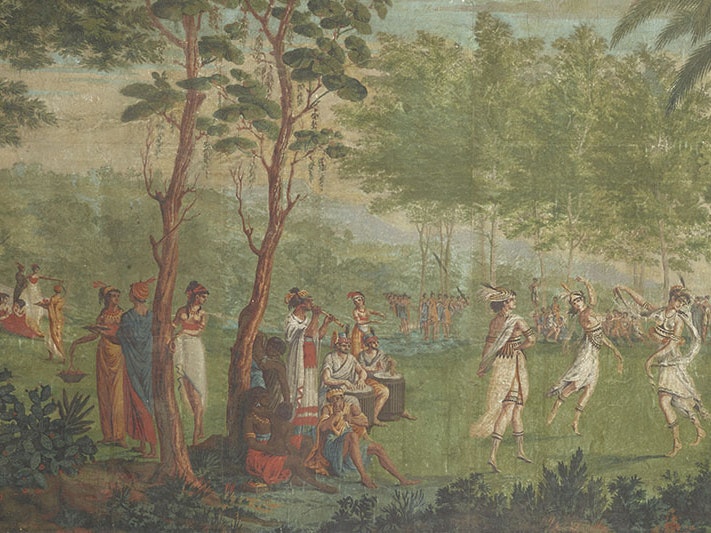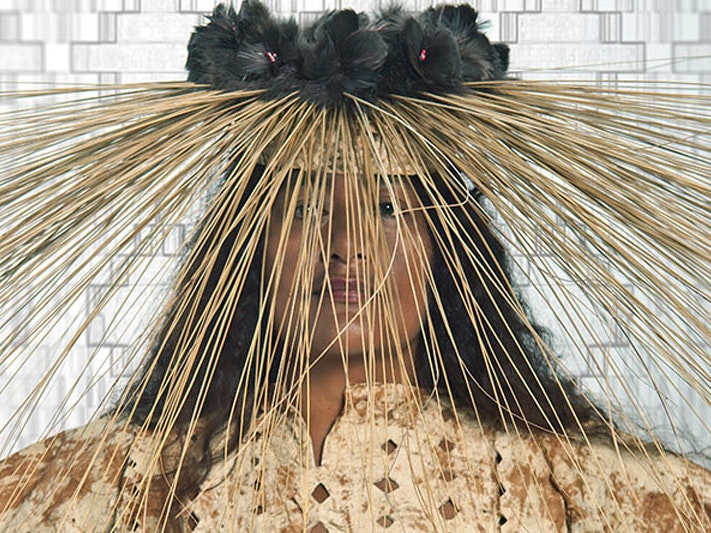![On the set at LOT23 Studio, Auckland, during shooting for in Pursuit of Venus [infected], 2014. Photo by Kallan McLeod. Courtesy of the artist Green screen behind the scenes of iPoV](/assets/76067/1693436757-f20-reihana-collating-insights-tile.jpg?ar=1.3333333333&fit=crop&auto=format)
Collating insights
Use simple activities to ensure the insights gained from the Explore kete are ready to inform a creative response.
Free museum entry for New Zealanders and people living in New Zealand
Open every day 10am-6pm
(except Christmas Day)
Free museum entry for New Zealanders and people living in New Zealand
Examine local histories in your own context, considering the ways in which dominant narratives can be addressed.
We are looking at the ways in which local histories are communicated in our area and whether we might be able to use art as a vehicle for new ideas.
Through these activities, learners will:
develop research, source analysis, and interview skills
consider bias and missing voices in relation to their own local context.
Reihana uses digital storytelling to tell new truths. Many other New Zealand artists are also interested in questioning past events, decolonising the narrative, and balancing the power. Seeking to redress past or current understandings requires us to examine the ways in which history is being created and transmitted.
In this activity, learners examine their local histories, and the experiences that inform that history.
Brainstorm together everything that the class already knows about the history of the local community. Perhaps draw a timeline on the wall, and place the pieces of knowledge that learners hold along the timeline. What was here 20, 50, 100, or 200 years ago? Invite a local historian to speak to the class, visit a local museum or library, or take a walking tour around the neighbourhood with a local history expert.
Notice the stories that have been told, the places and events that are celebrated, the names of landmarks, and street signs. Whose experiences of life are reflected in these local histories? Whose voices from the community might be missing?
In a way that is appropriate to the relationship that the school already has with mana whenua, discover as much as possible about the local environment and social systems in pre-colonial days. Seek to find the pūrākau to explain features of the living landscape, the history of ecosystems, the ways in which the land was engaged with in pre-colonial times, as well as the natural state of the whenua.
Gather insights from both these processes and expand the information that you started with on the local history timeline. Discuss as a class or in small groups: what are the differences, gaps, and overlaps between the two ways in which you’ve explored local history? What do you notice? What requires more examination? What do you want to address or change?
In this activity, learners consider their local context, and the opportunities that might exist to use art to re-imagine history.
Listen to Reihana’s interview where she talks about representation and identity. What drew her into retelling histories and stories, and why does she think it is important to re-imagine the past? Ask learners to imagine Reihana is their age and lives where they live. What do learners think she would want to tackle in their neighbourhood? What stories would she be interested in re-imagining? Alternatively, connect with a local artist or activist and learn about what is fuelling their fire. What do they want to put spotlights on?
How have you been able to find out about the story of the land on which your school stands?
How is history communicated in local artefacts such as street names, statues, parks, and plaques?
Whose history is told through these? What does this reflect to us? In what ways could we approach this differently?
What state does the land under your feet yearn to return to?
Who from te taiao is now missing from our local worlds? What does the local natural world need to thrive once more?
![On the set at LOT23 Studio, Auckland, during shooting for in Pursuit of Venus [infected], 2014. Photo by Kallan McLeod. Courtesy of the artist Green screen behind the scenes of iPoV](/assets/76067/1693436757-f20-reihana-collating-insights-tile.jpg?ar=1.3333333333&fit=crop&auto=format)
Use simple activities to ensure the insights gained from the Explore kete are ready to inform a creative response.

Explore colonial representations of Pacific peoples within art and the ways in which this has inspired contemporary artists to retell history.

Discover the ways in which costume and adornment can be used to communicate who we are.